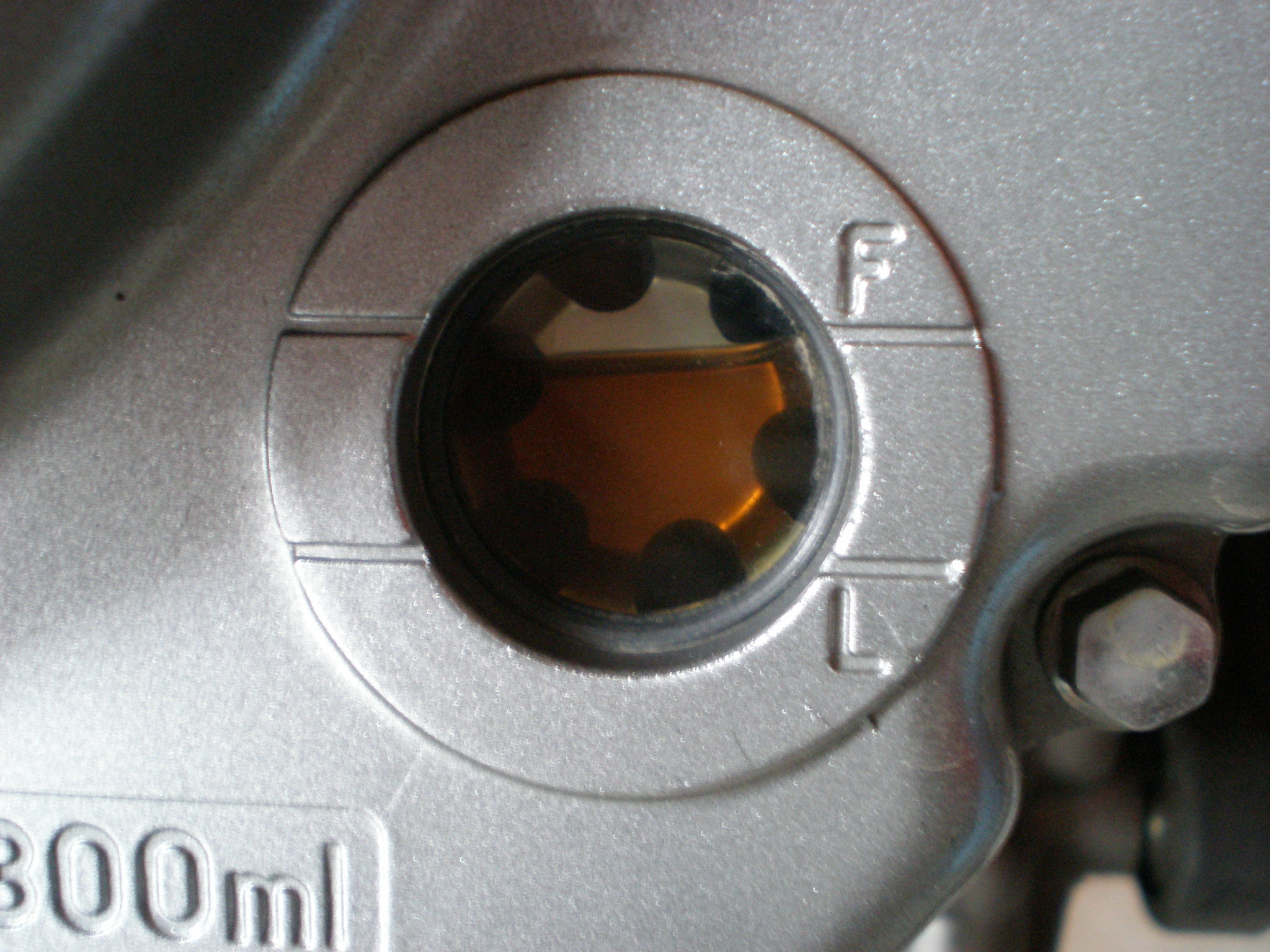  ® ®
|
More on Motor Oil |
The Internet is kind of like a TV sitcom, exhibiting as it does larger-than-life characterizations, actually caricatures, of the real thing. That is, distortions and parodies of reality. In this vein, I am thinking of Internet user forum threads on the topics of steering bearings, batteries, carburetors, fuel, and (gasp) motor oil. So much hand-wringing is evident about the "what," while little attention is given to the far more practical "how," of these controversial subjects. See my motor oil article for precise comments on the "what" question regarding motor oil. This treatment will deal with the "how".
Far more important than the type of oil you use in your powersports vehicle is how you maintain that oil. Do you check the level often? Do you run the engine before determining the final level during an oil change? Some vehicles demand this more than others, but all of them have sumps, oil filters, and other engine lubrication system characteristics that require careful double-checks during the oil change procedure. Moreover, manufacturers frequently change their recommended procedure for checking the oil level in their products. On some models, you run the engine then shut it off and immediately check the level. With others, you wait a prescribed amount of time after turning the engine off before actually checking the level. In some engines you simply insert the dipstick in the hole. In others it is screwed into the hole to check the level. It must be done the way the manufacturer prescribes.
And oil level monitoring over time is extremely important, perhaps the most important aspect of motor oil in a motorcycle. Powersports engines are somewhat unique in that, due to higher rpm and higher temperatures than are common with other vehicles, they vaporize their oil, actually consuming a significant percentage of it by dramatically frothing and shearing it in the crankcase, then pushing it out to the atmosphere as a gas. This is not an opinion on my part, but well documented in addition to the observation of career techs for decades. Powersports motor oil companies are well aware of this unique powersports motor oil challenge, and they formulate their products with vaporization resistance in mind. So check the level in your bike often.
Realize also that since most powersports vehicles run just one oil for both crankcase and transmission that this means clutching and shifting are directly affected by your engine's motor oil. Pro techs have long observed and understood that over-filling a Japanese motorcycle's crankcase, for example, makes shifting sticky, difficult, and clutches grabby and prone to overheating. Shifting is affected on these machines because smooth shifting depends heavily on optimum clutch function, which in turn is dramatically influenced by crankcase oil level and by the oil itself. In fact, due to motor oil's effect on clutch cooling, its disengagement zone, and its overall friction characteristics, the number one real-world benefit of using synthetic oil, for example, is invariably better shifting. Synth oil coddles the clutch better, which in turn results in better gear changes.
If you want to be way ahead of everyone else when it comes to taking care of your bike's engine oil needs, bring more focus on these things -- level and changing -- than on brand, viscosity, or whether petro or synth. Your engine will thank you.
Also see: |
Email me
© 1996-2022 Mike Nixon
